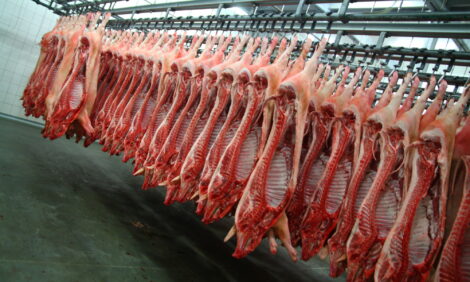



Managing the Farrowing Period for the Sow and the Litter
More focus should be placed on the care and welfare of sows during farrowing and lactation, said John Deen of the University of Minnesota St Paul at the Manitoba Swine Seminar 2010.
As with most species, the time around parturition is a risky time. For sows, it should be small due to the wide difference in the size between the sow and piglets. In fact, this is not the case. As Figure 1 shows, there is a high risk of mortality surrounding the farrowing period. Moreover, after that initial insult, we see a continued high level of mortality risk during the lactation period.
It is not only mortality that can be a problem, as we do have a high level of likelihood of culling and mortality after weaning. This is often associated with a lower quality of sow at weaning, with problems of lameness and poor condition being prevalent. Unlike parturition, where it can be argued that the sow is at less risk than many species, the opposite can be said for lactation. The sow is faced with extraordinary metabolic challenges as she produces a high level of milk production and progeny growth during the lactation period. There are few species that put such a high proportion of their body weight into the growth of their progeny. Mice and other small rodents are one example, however, species such as cattle or sheep come nowhere close to the high level of maternal contribution.

Likewise, piglets are under a high level of risk during this time. Mortality during parturition, seen as stillbirths, and mortality during lactation, especially during the first few days, is a major concern. In addition to concerns about mortality, we have to recognise that the performance of piglets during lactation is a major predictor of subsequent performance. Weaning weights, along with growth rates during lactation, are good predictors of subsequent mortality and poor growth rates. These poorly performing pigs in the farrowing crate are added risks to other pigs at weaning, particularly as they appear to carry added levels of pathogens.
It is the argument of this paper that the quality of the sow at farrowing has been an understudied area. There are a number of reports that studied the effect of piglet quality upon the subsequent ability to survive and thrive. Factors such as birth weight, birth order and temperature have been studied in some detail. However, the protection of the sow has been studied in less detail. We should look more closely at sow quality and comfort on survivability, not only to protect the sow during the parturition and lactation periods but also to increase the quality of the progeny.
It can even be argued that there is an inherent bias in the management of the farrowing room that results in more care for her piglets than for sows. Here are two examples:
- Farrowing room temperature – The optimal temperature for the sow, especially during periods of high metabolism appears to be in the area of 14°C. Conversely, newborn piglets could use a temperature closer to 32°C. In many farrowing rooms, we see a bias towards protecting piglets rather than protecting sows in ensuring comfort and appetite.
- Farrowing room floors – For the size of the sow, claws are relatively small and a great deal of pressure is exerted per square centimetre of surface area. Yet the farrowing room has an extraordinary high level of void space in most flooring materials. Most of these flooring materials have been chosen for the protection of piglets through high levels of sanitation. Yet we are seeing that such floors increase the discomfort of sows, especially when there are pre-existing lesions on the claws of the sows.
Much of this bias can be explained through the record-keeping system. Farrowing room records are mostly directed towards piglet quality and survivability. Little is focused on the pre-existing conditions of the sows entering the farrowing crate, nor the quality of the sow at exit. In some cases, we do have records for sow weight and back fat but these are limited.
Figure 2 exhibits one such quality issue. In this study, Dr Deen examined the issue of lameness in sows at exit from the farrowing crate. These sows showed a much lower likelihood of survivability after exit and ensuing studies have also shown that the quality of piglets from lame sows is lower due to changes in weaning weights and reductions in survivability. Behavioural studies are showing that one of the main measures of concern is actually the willingness of the sow to get up and eat and drink. When this is limited, we see compromises in the capability of the sow to maintain its weight and milking abilities.

Therefore, we think that much more focus should be placed on the care of sows during this period. Here are a few suggestions:
- Rubber mats. For sows that are lame, especially with claw lesions, we are finding that there is an increase in the amount eaten with the use of rubber mats under the hind feet. The numbers are limited for survivability studies but we would expect from previous studies that the likelihood of survival would increase as well.
- Long-acting analgesia is also an effective way of increasing the comfort of those sows in pain. This again has been shown to increase the survival of both sows and progeny.
- Flooring choices. We must put more focus on the choice of flooring for lactating sows to ensure that they feel comfortable enough to get up without slipping and maintain their stance for an adequate amount of time. Lower void space on flooring appears to be an effective way of increasing that comfort level. It may also be useful to provide separate padded areas for the sow's feet.
- Cooling, of course, is very useful during times of warm weather, however, as mentioned, there is also a need to re-evaluate farrowing room temperatures.
As introduced earlier, the amount of research and focus on the quality and survivability of sows is limited. This is an area that needs more focus and more research to allow us to reach the point where the quality of sows exit from the farrowing room is assumed rather than hoped.
Further Reading
| - | You can view the other papers presented at the Manitoba Swine Seminar 2010 by clicking here. |
June 2011








